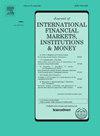Give me a break: What does the equity premium compensate for?
IF 6.1
2区 经济学
Q1 BUSINESS, FINANCE
Journal of International Financial Markets Institutions & Money
Pub Date : 2025-01-10
DOI:10.1016/j.intfin.2024.102103
引用次数: 0
Abstract
We provide evidence that the equity premium does not simply compensate investors for bearing market risk per se and contribute to an adequate modeling of the intertemporal risk-return relationship. Our model captures the relationship between conditional expected excess stock market returns, conditional market volatility, and conditional market illiquidity, while taking scheduled trading breaks into account. We distinguish between two distinct sources of market risk, namely continuous diffusive risk during trading hours and a discontinuous component representing random overnight price jumps. Utilizing high-frequency data, we estimate specific premia for trading and non-trading components in terms of conditional volatility as well as conditional illiquidity. Our findings reveal that the conditional equity premium primarily compensates for bearing risk and illiquidity during market closures. Conditional volatility and illiquidity during trading hours play only a minor role in explaining the equity premium and shaping the intertemporal risk-return relationship.
得了吧,股票溢价补偿了什么?
我们提供的证据表明,股票溢价本身并不只是对投资者承担市场风险的补偿,而且有助于对跨期风险收益关系进行充分建模。我们的模型捕捉了条件预期股市超额收益、条件市场波动性和条件市场流动性不足之间的关系,同时考虑了计划交易间歇。我们区分了两种不同的市场风险来源,即交易时段内的连续扩散风险和代表随机隔夜价格跳动的非连续部分。利用高频数据,我们从条件波动率和条件非流动性的角度估算了交易和非交易成分的特定溢价。我们的研究结果表明,条件股票溢价主要补偿了市场关闭期间的承受风险和流动性不足。交易时间内的条件波动性和非流动性在解释股票溢价和形成跨期风险-收益关系方面只起了很小的作用。
本文章由计算机程序翻译,如有差异,请以英文原文为准。
求助全文
约1分钟内获得全文
求助全文
来源期刊
CiteScore
6.60
自引率
10.00%
发文量
142
期刊介绍:
International trade, financing and investments, and the related cash and credit transactions, have grown at an extremely rapid pace in recent years. The international monetary system has continued to evolve to accommodate the need for foreign-currency denominated transactions and in the process has provided opportunities for its ongoing observation and study. The purpose of the Journal of International Financial Markets, Institutions & Money is to publish rigorous, original articles dealing with the international aspects of financial markets, institutions and money. Theoretical/conceptual and empirical papers providing meaningful insights into the subject areas will be considered. The following topic areas, although not exhaustive, are representative of the coverage in this Journal. • International financial markets • International securities markets • Foreign exchange markets • Eurocurrency markets • International syndications • Term structures of Eurocurrency rates • Determination of exchange rates • Information, speculation and parity • Forward rates and swaps • International payment mechanisms • International commercial banking; • International investment banking • Central bank intervention • International monetary systems • Balance of payments.

 求助内容:
求助内容: 应助结果提醒方式:
应助结果提醒方式:


